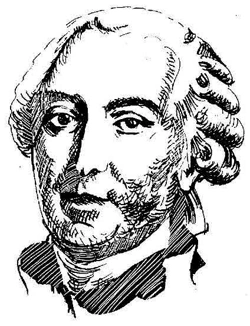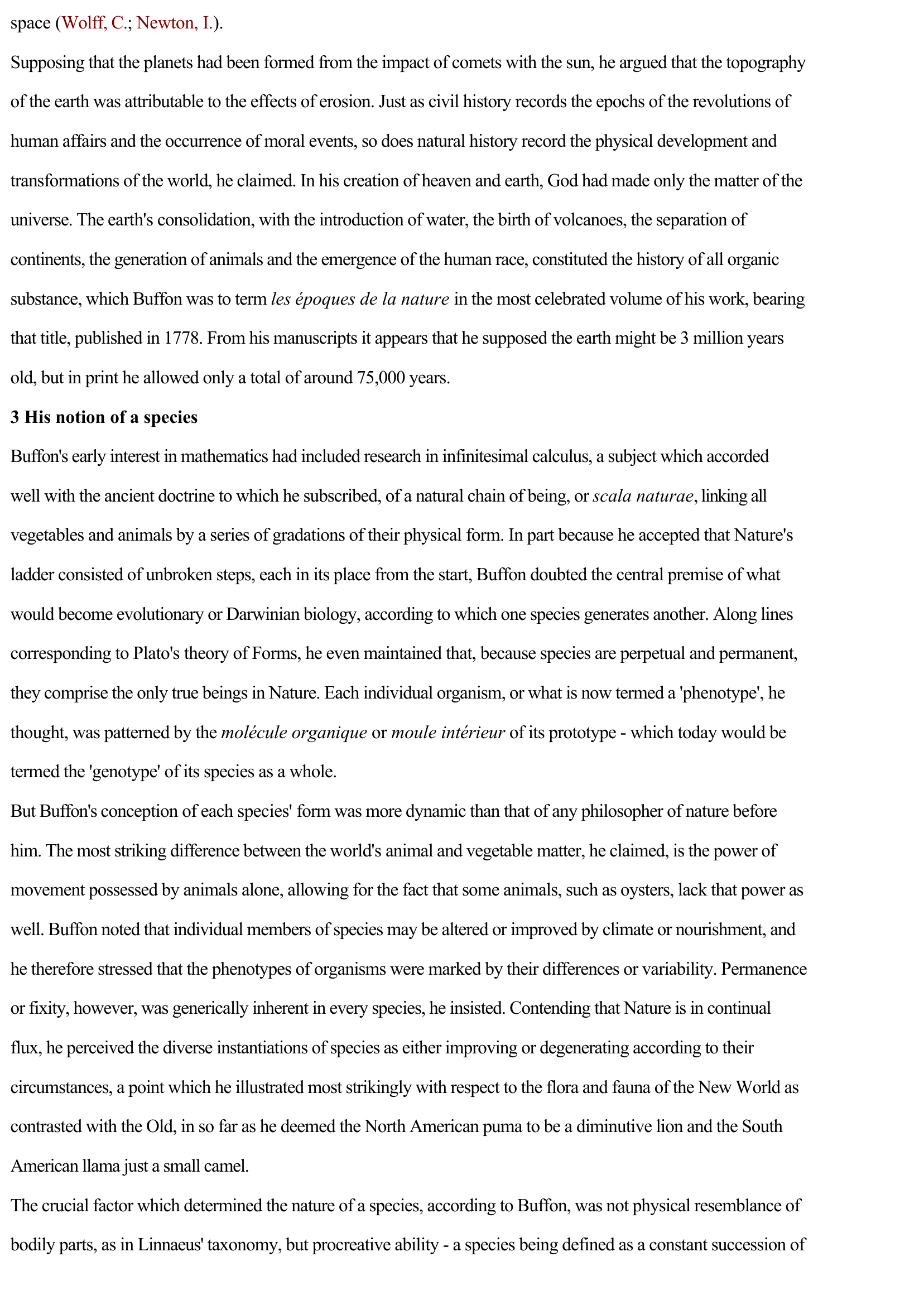Buffon, Georges Louis Leclerc, Comte de
Publié le 22/02/2012

Extrait du document


«
space ( Wolff, C. ; Newton, I. ).
Supposing that the planets had been formed from the impact of comets with the sun, he argued that the topography
of the earth was attributable to the effects of erosion.
Just as civil history records the epochs of the revolutions of
human affairs and the occurrence of moral events, so does natural history record the physical development and
transformations of the world, he claimed.
In his creation of heaven and earth, God had made only the matter of the
universe.
The earth's consolidation, with the introduction of water, the birth of volcanoes, the separation of
continents, the generation of animals and the emergence of the human race, constituted the history of all organic
substance, which Buffon was to term les époques de la nature in the most celebrated volume of his work, bearing
that title, published in 1778.
From his manuscripts it appears that he supposed the earth might be 3 million years
old, but in print he allowed only a total of around 75,000 years.
3 His notion of a species
Buffon's early interest in mathematics had included research in infinitesimal calculus, a subject which accorded
well with the ancient doctrine to which he subscribed, of a natural chain of being, or scala naturae , linking all
vegetables and animals by a series of gradations of their physical form.
In part because he accepted that Nature's
ladder consisted of unbroken steps, each in its place from the start, Buffon doubted the central premise of what
would become evolutionary or Darwinian biology, according to which one species generates another.
Along lines
corresponding to Plato's theory of Forms, he even maintained that, because species are perpetual and permanent,
they comprise the only true beings in Nature.
Each individual organism, or what is now termed a 'phenotype' , he
thought, was patterned by the molécule organique or moule intérieur of its prototype - which today would be
termed the 'genotype' of its species as a whole.
But Buffon's conception of each species' form was more dynamic than that of any philosopher of nature before
him.
The most striking difference between the world's animal and vegetable matter, he claimed, is the power of
movement possessed by animals alone, allowing for the fact that some animals, such as oysters, lack that power as
well.
Buffon noted that individual members of species may be altered or improved by climate or nourishment, and
he therefore stressed that the phenotypes of organisms were marked by their differences or variability.
Permanence
or fixity, however, was generically inherent in every species, he insisted.
Contending that Nature is in continual
flux, he perceived the diverse instantiations of species as either improving or degenerating according to their
circumstances, a point which he illustrated most strikingly with respect to the flora and fauna of the New World as
contrasted with the Old, in so far as he deemed the North American puma to be a diminutive lion and the South
American llama just a small camel.
The crucial factor which determined the nature of a species, according to Buffon, was not physical resemblance of
bodily parts, as in Linnaeus' taxonomy, but procreative ability - a species being defined as a constant succession of.
»
↓↓↓ APERÇU DU DOCUMENT ↓↓↓
Liens utiles
- HISTOIRE NATURELLE, GÉNÉRALE ET PARTICULIÈRE de Buffon (Georges-Louis Leclerc, comte de)
- Georges-Louis Leclerc, comte de Buffon : Discours sur le style (résumé et analyse)
- SCIENCES & TECHNIQUES: Georges Louis Leclerc Comte de Buffon
- BUFFON, Georges Louis Leclerc, comte de (1707-1788) Naturaliste Après des études chez les jésuites et une licence en droit, Buffon voyage en France et en Angleterre.
- Buffon (Georges Louis Leclerc, comte de) Naturaliste et écrivain français (Montbard, 1707 - Paris, 1788).

































